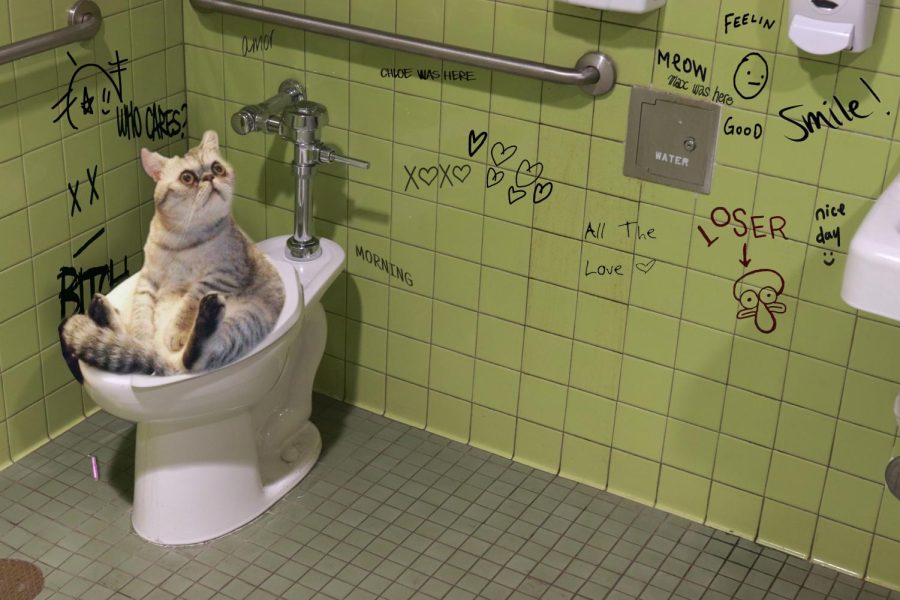Just how do you really feel on the subject of Don’t flush cat feces down the toilet?

Intro
As pet cat owners, it's important to bear in mind just how we dispose of our feline pals' waste. While it might seem practical to purge pet cat poop down the commode, this method can have harmful effects for both the atmosphere and human health.
Ecological Impact
Flushing pet cat poop introduces unsafe microorganisms and bloodsuckers into the water system, positioning a substantial risk to marine ecosystems. These pollutants can adversely impact aquatic life and concession water high quality.
Wellness Risks
In addition to ecological problems, flushing feline waste can additionally pose health and wellness threats to people. Pet cat feces may have Toxoplasma gondii, a bloodsucker that can cause toxoplasmosis-- a potentially severe illness, particularly for pregnant females and people with damaged body immune systems.
Alternatives to Flushing
Luckily, there are more secure and a lot more liable methods to throw away feline poop. Think about the following choices:
1. Scoop and Dispose in Trash
One of the most typical technique of getting rid of cat poop is to scoop it right into a naturally degradable bag and throw it in the garbage. Be sure to use a committed trash scoop and dispose of the waste without delay.
2. Usage Biodegradable Litter
Choose eco-friendly feline litter made from products such as corn or wheat. These trashes are environmentally friendly and can be safely dealt with in the garbage.
3. Bury in the Yard
If you have a backyard, think about burying cat waste in a marked location away from vegetable gardens and water resources. Be sure to dig deep adequate to stop contamination of groundwater.
4. Set Up a Pet Waste Disposal System
Invest in a pet dog waste disposal system especially designed for feline waste. These systems use enzymes to break down the waste, minimizing odor and environmental impact.
Conclusion
Accountable family pet possession extends past providing food and sanctuary-- it also includes correct waste management. By avoiding purging cat poop down the bathroom and going with alternative disposal approaches, we can minimize our environmental impact and shield human health and wellness.
Why Can’t I Flush Cat Poop?
It Spreads a Parasite
Cats are frequently infected with a parasite called toxoplasma gondii. The parasite causes an infection called toxoplasmosis. It is usually harmless to cats. The parasite only uses cat poop as a host for its eggs. Otherwise, the cat’s immune system usually keeps the infection at low enough levels to maintain its own health. But it does not stop the develop of eggs. These eggs are tiny and surprisingly tough. They may survive for a year before they begin to grow. But that’s the problem.
Our wastewater system is not designed to deal with toxoplasmosis eggs. Instead, most eggs will flush from your toilet into sewers and wastewater management plants. After the sewage is treated for many other harmful things in it, it is typically released into local rivers, lakes, or oceans. Here, the toxoplasmosis eggs can find new hosts, including starfish, crabs, otters, and many other wildlife. For many, this is a significant risk to their health. Toxoplasmosis can also end up infecting water sources that are important for agriculture, which means our deer, pigs, and sheep can get infected too.
Is There Risk to Humans?
There can be a risk to human life from flushing cat poop down the toilet. If you do so, the parasites from your cat’s poop can end up in shellfish, game animals, or livestock. If this meat is then served raw or undercooked, the people who eat it can get sick.
In fact, according to the CDC, 40 million people in the United States are infected with toxoplasma gondii. They get it from exposure to infected seafood, or from some kind of cat poop contamination, like drinking from a stream that is contaminated or touching anything that has come into contact with cat poop. That includes just cleaning a cat litter box.
Most people who get infected with these parasites will not develop any symptoms. However, for pregnant women or for those with compromised immune systems, the parasite can cause severe health problems.
How to Handle Cat Poop
The best way to handle cat poop is actually to clean the box more often. The eggs that the parasite sheds will not become active until one to five days after the cat poops. That means that if you clean daily, you’re much less likely to come into direct contact with infectious eggs.
That said, always dispose of cat poop in the garbage and not down the toilet. Wash your hands before and after you clean the litter box, and bring the bag of poop right outside to your garbage bins.
https://trenchlesssolutionsusa.com/why-cant-i-flush-cat-poop/

We had been guided to that article about Don’t flush cat feces down the toilet from a friend on our other blog. Do you know another person who is in the market for the subject? Why not share it. Many thanks for your time. Please check up our blog back soon.
Call Today